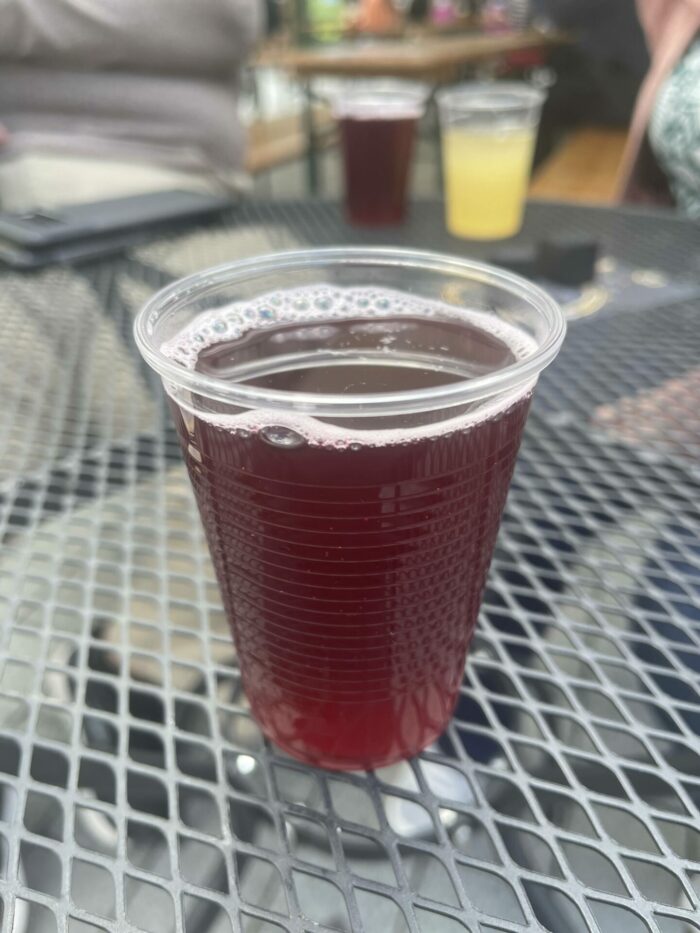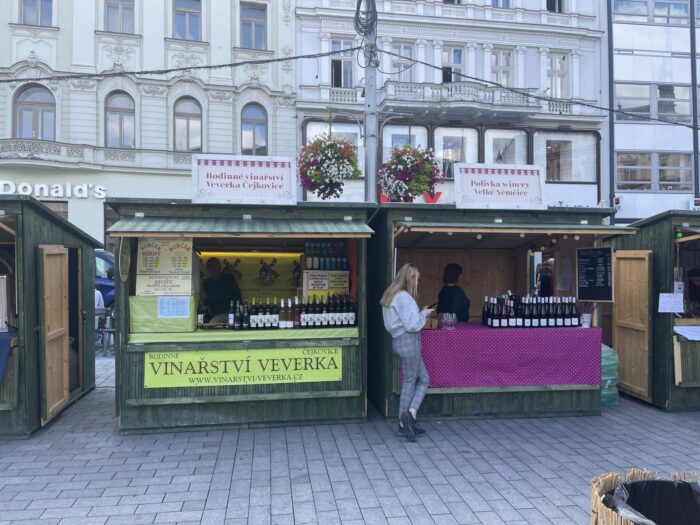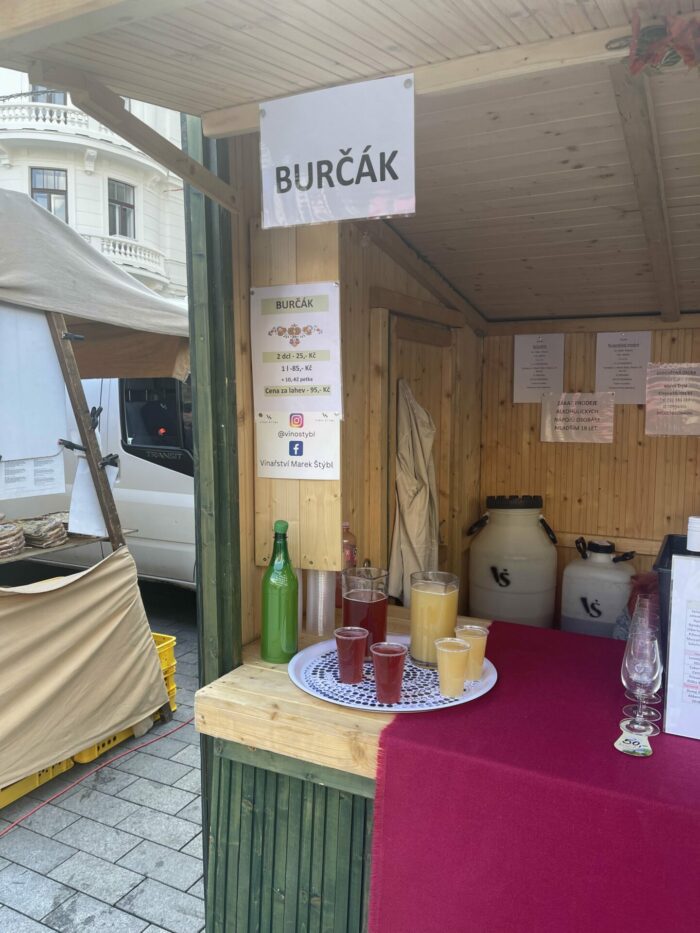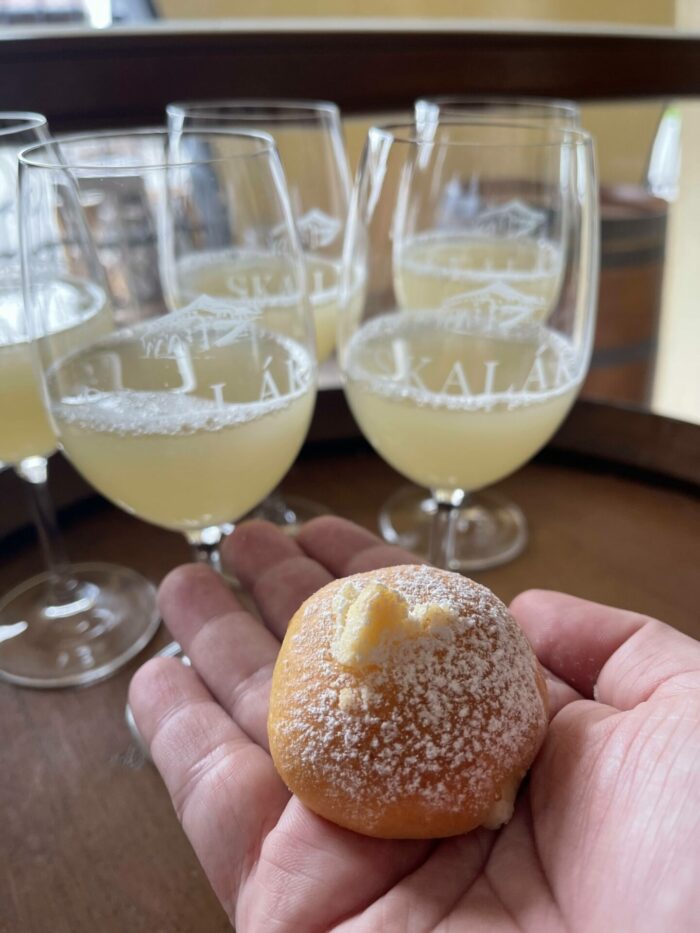This article has partner links that I may receive compensation from at no cost to you. Thank you for supporting my site by using them!
Head to the Czech Republic in the autumn and you’ll often see a cloudy drink being sold at harvest festivals and on the streets of South Moravia and Prague. While it may resemble juice or cider, this harvest-time treat is actually a fermented young wine known as burčák.

What is burčák?
Burčák is a Czech young wine that has been partially fermented. After grapes are harvested & pressed, winemakers then add yeast to the resulting juice (unless enough yeast is already naturally present). Full fermentation for wine takes about two weeks, but after just a few days, the result is burčák. Most burčák is made from white grapes, though some producers do make red & rosé burčák.

Burčák is mildly alcoholic, typically ranging from about 4-7%. However, since it is still fermenting, purchased burčák continues to get stronger in the bottle (while also losing its pleasantly sweet flavor). Therefore it should be kept cool, with the cap loosened in order to prevent explosions. Burčák is best consumed as soon as possible in order to properly enjoy the early wine at its light, fizzy, sweet peak.
Many believe that there are health benefits to drinking partially fermented wine, as it contains vitamins and minerals.
As for the pronunciation, it depends on how much burčák you’ve consumed, but it’s something like boor-chahk.
Book your hotel in Czech Republic now!Drinking burčák – When & where to find it
Burčák season occurs each autumn, with the peak being for about six weeks in September & early October. The production season varies due to the weather & the harvest. Legally, burčák can only be sold between August 1st and November 30th each year.

During harvest season, you can find the young fermented wine all over South Moravia, as well as in Prague. While other nearby countries such as Germany & Austria also sell early wine, only Czech young wine can be called burčák.
While most people are familiar with Europe’s plentiful Christmas markets, autumn is also filled with festivals, including wine festivals known as vinobraní. Visit any autumn festival in the region and you’ll find stands selling burčák.

Some pour from fancier barrels, while others serve from plastic bottles. These stands should be providing details about the producers of the young wine, including the winemaker & which grapes were used. If they can’t or won’t, move on to a different seller.

My first taste of burčák was at a festival in Brno. I would later end up having it at nearly every winery I visited, including when I went winemaking in South Moravia.

Once you notice people selling plastic bottles of burčák, you’ll start to realize they’re all over, including people selling the Czech early wine from tables or vans. Generally, these sellers are less reputable & can even be passing off fake wine to take advantage of the seasonal demand. Often, this fake or lesser quality burčák is browner in color & has been left sitting in the sun all day. For the best burčák, visit one of the great South Moravian wineries or head to a stand at a festival that is providing full information about where the drink has come from.
A Czech legend states that one should drink as much burčák as they have blood in their veins. That might be overdoing it, but drinking burčák is an autumn delight that is not to be missed.
Here are some great Brno tours & activities & other things to see & do in Brno.
If you’re looking for a place to stay in Brno, check out these hotels.

